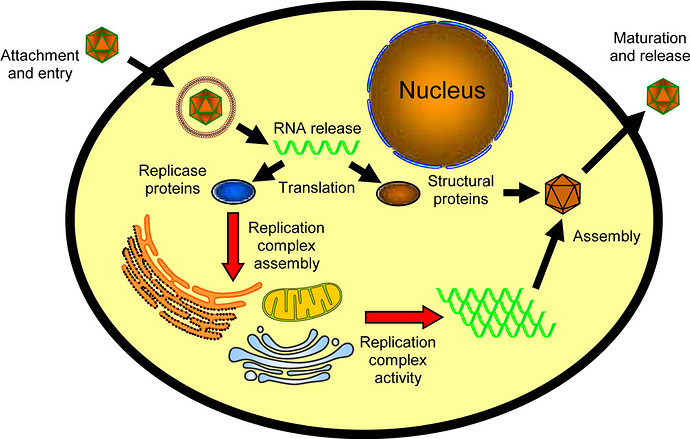I can understand why people are apprehensive about new vaccine technologies. Humans are usually apprehensive about anything that is new, especially when it is something being injected into your body. I get it.
I also understand that the general public doesn’t understand the ins and outs of genetics. I was having a conversation with some friends over a few pints, and they asked me about the vaccine. I tried to explain how the vaccine worked, and they confessed they were completely lost. They really didn’t have a good grasp on what RNA is, or its role in the cell. I would assume that this is true for most of the public. I’m hoping this thread can help to fill that gap in knowledge.
I am going to make a provocative statement. It is almost guaranteed that everyone reading this post has been vaccinated with RNA (sort of). These “vaccinations” occurred well before the current pandemic, and you probably got your first RNA “vaccinations” when you were a toddler or even a baby.
Why am I calling them vaccinations . . . sort of? Because they are actual infections from RNA viruses. Many coronaviruses cause what we call the common cold, and they are RNA viruses. Influenza is also a common RNA viruses. If you’ve had the cold or the flu you have been vaccinated with RNA. For those nitpickers out there, I am referring to the non-retroviral RNA viruses for the purposes of this thread.
How do RNA viruses work? A lot like the newest vaccines. The virus has an RNA genome, and once the virus attaches to your cells it pukes that RNA genome into the cell it is attached to. Once the RNA viral genome is inside your cells the ribosomes in your cells start to make that RNA into proteins. One of those viral proteins also copies the RNA into new RNA strands that then go into new viral particles that are forming at the surface of your infected cells. Those particles bud off, attach to new cells, and repeat the process.
So what is RNA? You can think of RNA as the messenger between your DNA and your proteins. When a DNA gene is expressed it is copied into RNA. That RNA is then read by your ribosomes to make proteins.
Also, RNA doesn’t hang around for long, maybe a few minutes to a day or so before processes in the cell cut it up and recycle it. Interestingly, RNA viruses have a protein that copies RNA into RNA instead of DNA into RNA which is how our cells normally do it. Nonetheless, the viral RNA genome is ultimately made into proteins, and those proteins illicit an immune response. It looks something like this:
The mRNA vaccines work in essentially the same way. The fatty particles in the vaccine bind to your cells and puke an RNA molecule into your cells. That RNA molecule is made into a protein. That protein is displayed on the outside of your cells where your immune cells mount an immune response to the foreign protein. The antibodies and cells created by this process give you long term immunity just as it happens with the actual infection.
So have you been vaccinated with an mRNA vaccine in the past? Yes . . . sort of. In fact, the word “vaccine” comes from the Latin word “vacca” which means cow. Why cow? The first vaccine was against small pox, and the vaccine was active and infective cowpox. The very first vaccine was a live virus from cows. Cowpox is actually a DNA virus, but there is still mRNA made from that DNA, so one could say that it was also an mRNA vaccine . . . of sorts. The proteins associated with cowpox were close enough to smallpox that the immune response to cowpox protected against smallpox.
So there you go. The very first vaccine, clear back in 1700’s and 1800’s, was an mRNA vaccine (sort of). We are all carrying long term immunity thanks to viral RNA being injected into our cells. So the next time you wonder about the safety of mRNA vaccines just remember that humanity has been acquiring immunity through viral RNA since there have been humans.

